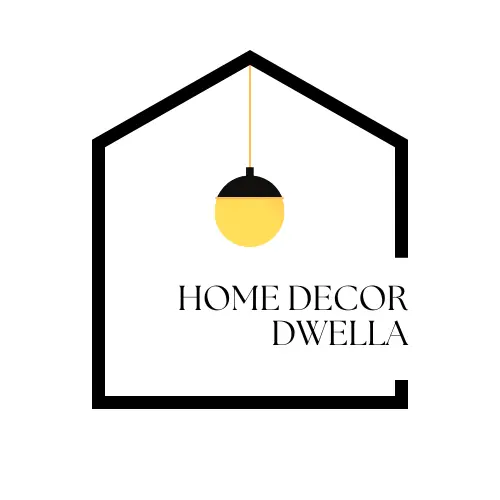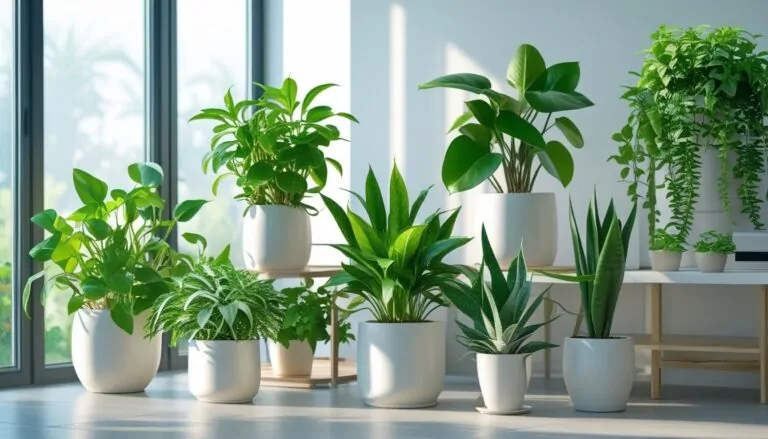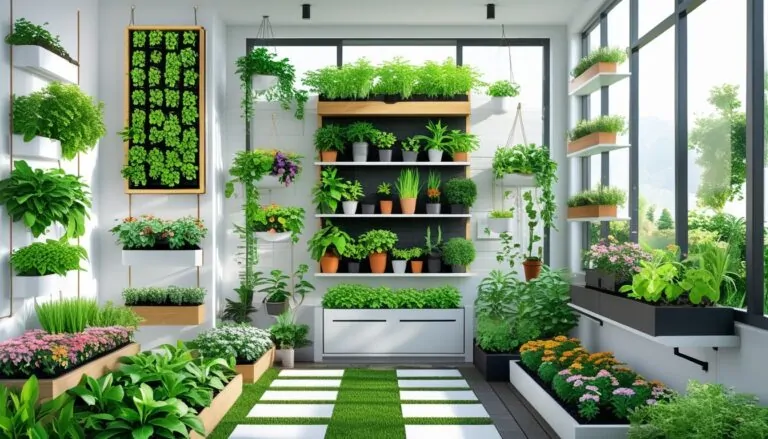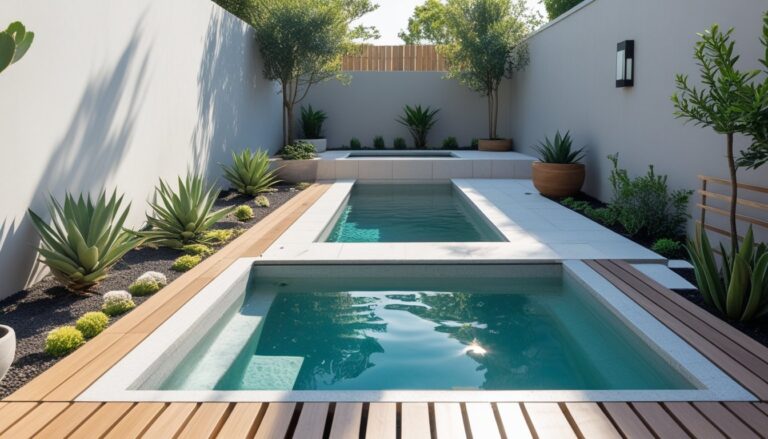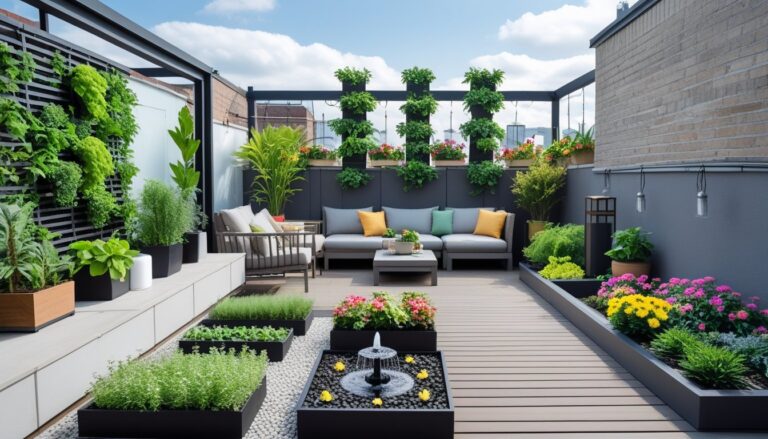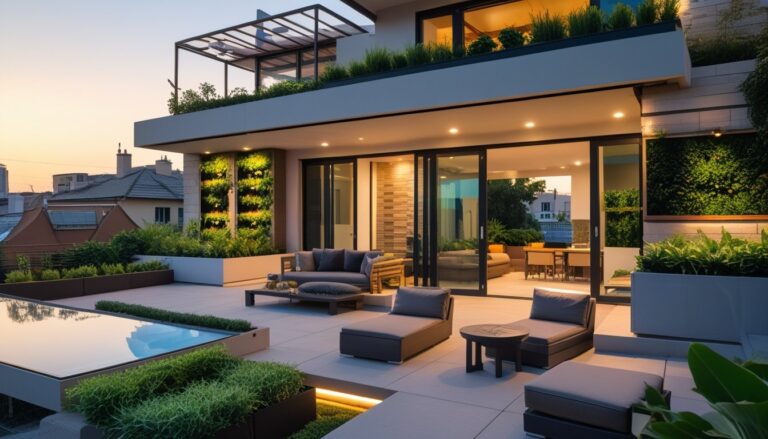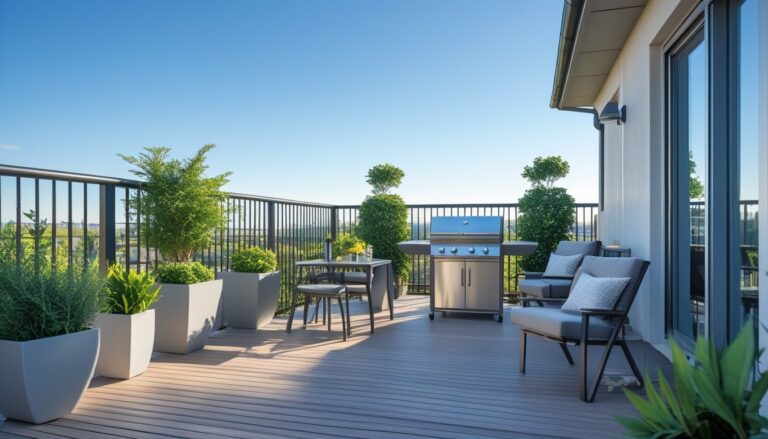5 Outdoor Home Gym Inspirations to Elevate Your Fitness Space
Many people want to stay fit while enjoying fresh air and nature. Creating an outdoor home gym can make workouts more enjoyable and relaxing. It offers a change from indoor spaces and allows for a blend of exercise and the outdoors.
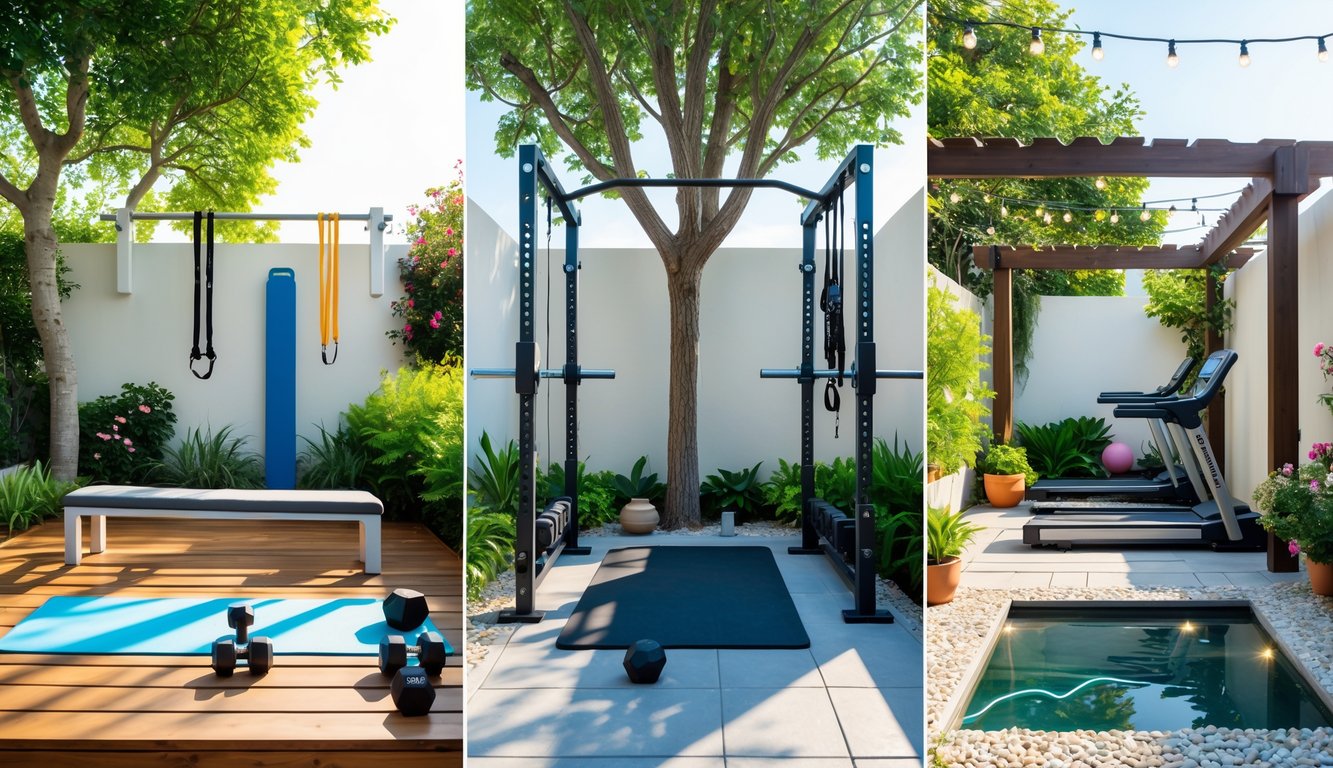
An outdoor home gym can be designed to fit different spaces and needs, making fitness accessible and motivating. With the right setup, anyone can have a practical and inspiring place to work out in their own backyard or garden.
1) Pergola-covered workout area for shade and weather protection
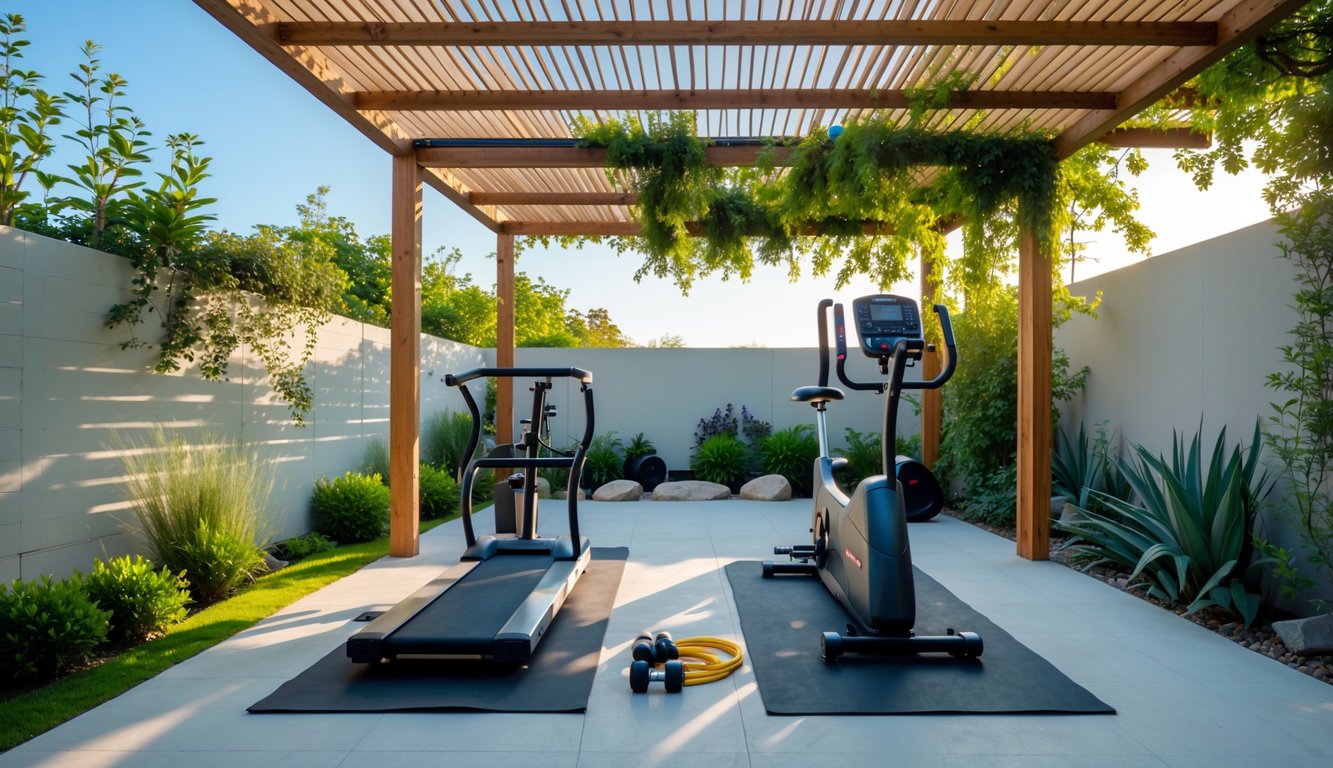
A pergola provides partial shade while allowing fresh air to flow. It protects from sun and light rain, making workouts more comfortable.
This structure fits well in outdoor gyms, offering a sheltered space without feeling closed in. It can support climbing plants or lights for a better atmosphere.
2) Solar-powered outdoor gym lighting and equipment
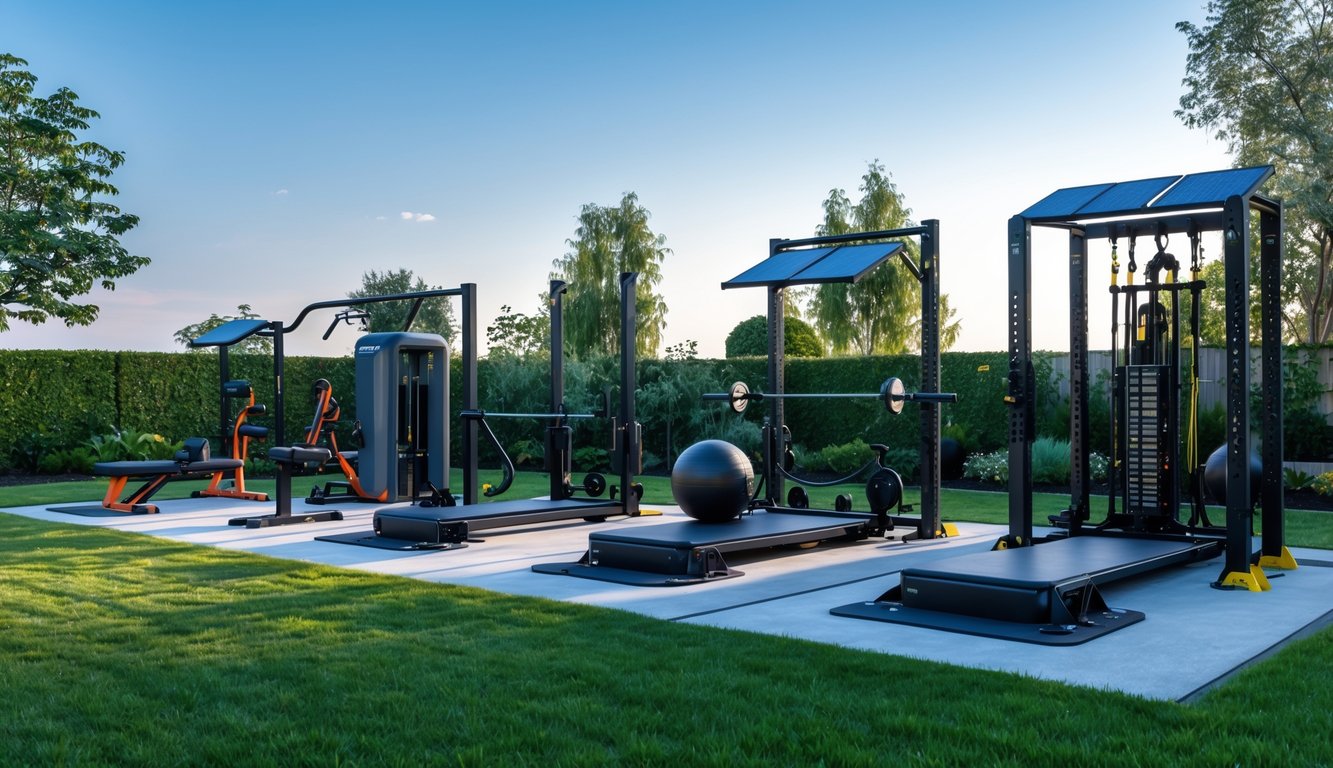
They use solar panels to power lights and equipment. This setup saves electricity and works well in sunny areas.
Solar energy helps keep the gym bright and machines running without extra costs. It supports eco-friendly workouts outdoors.
3) Modular gym stations with pull-up bars and dip stations
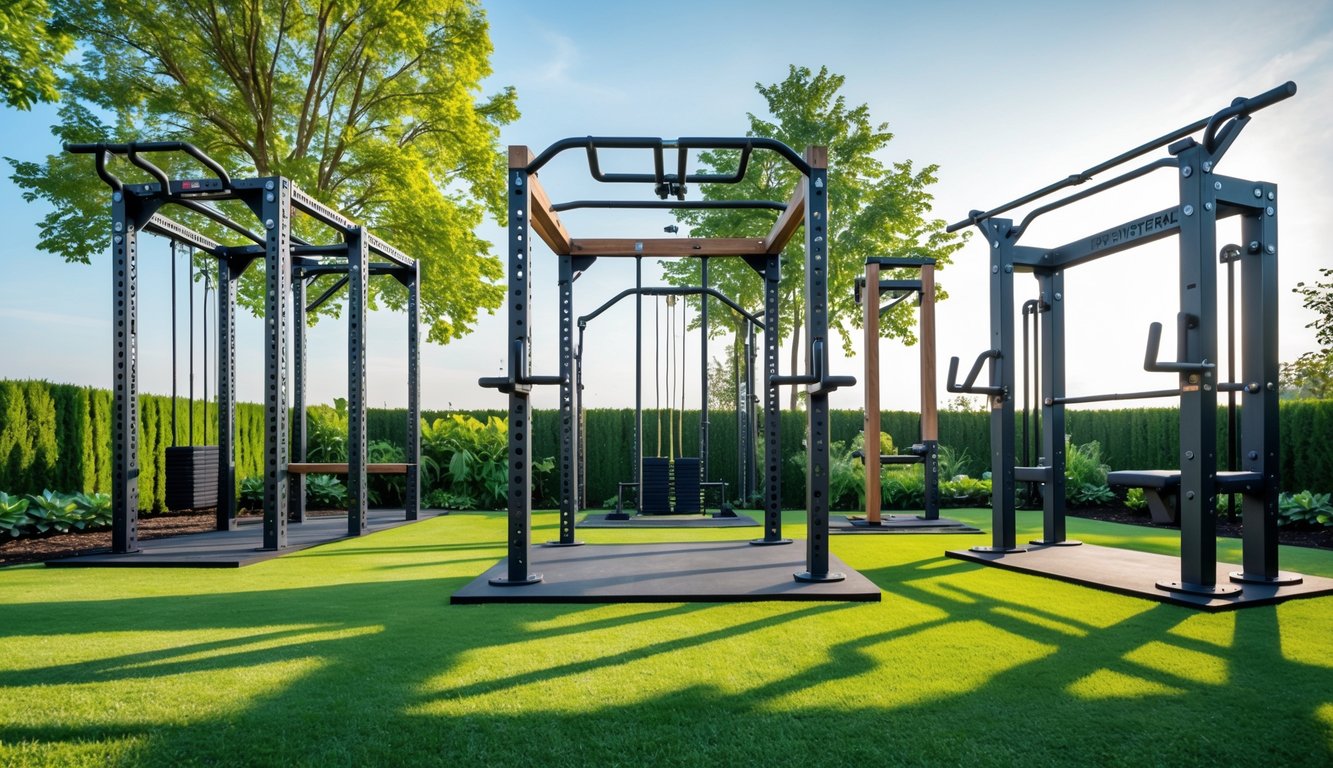
Modular gym stations offer versatility for outdoor workouts. They combine pull-up bars and dip stations in one unit. This design saves space and supports multiple exercises for strength training.
Many options are adjustable, allowing users to change height and intensity. They are usually made from durable materials to handle weather and heavy use.
4) Weather-resistant storage solutions for fitness gear
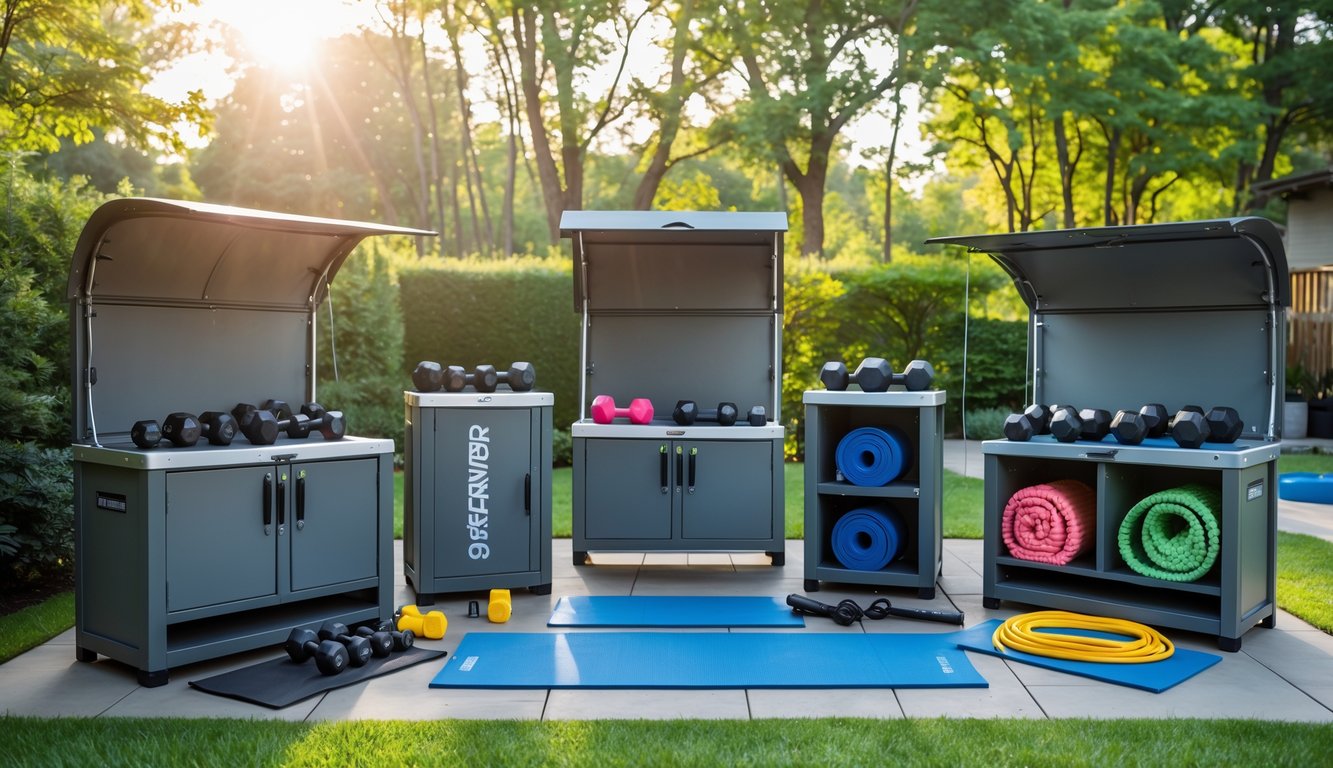
Weather-resistant storage keeps gym equipment safe from rain and sun damage. Durable materials like powder-coated metal and treated wood help prevent rust and rot.
These storage options make gear easy to access and maintain. They create an organized outdoor gym space that lasts longer.
5) Rubber flooring mats for outdoor safety and comfort
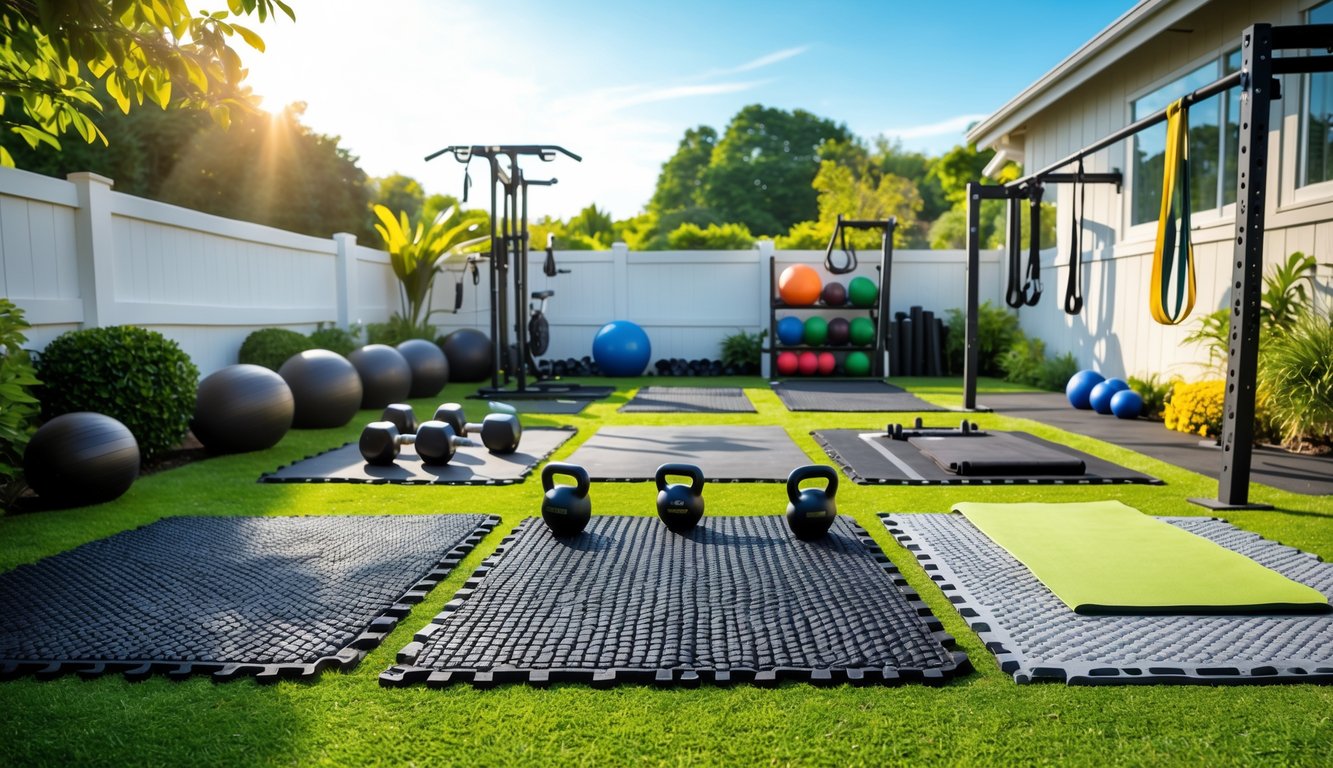
Rubber mats provide a safe surface for outdoor workouts. They reduce impact and prevent slips.
These mats are weather-resistant and durable. They protect the ground and offer comfort during exercise.
Key Design Considerations for Outdoor Home Gyms
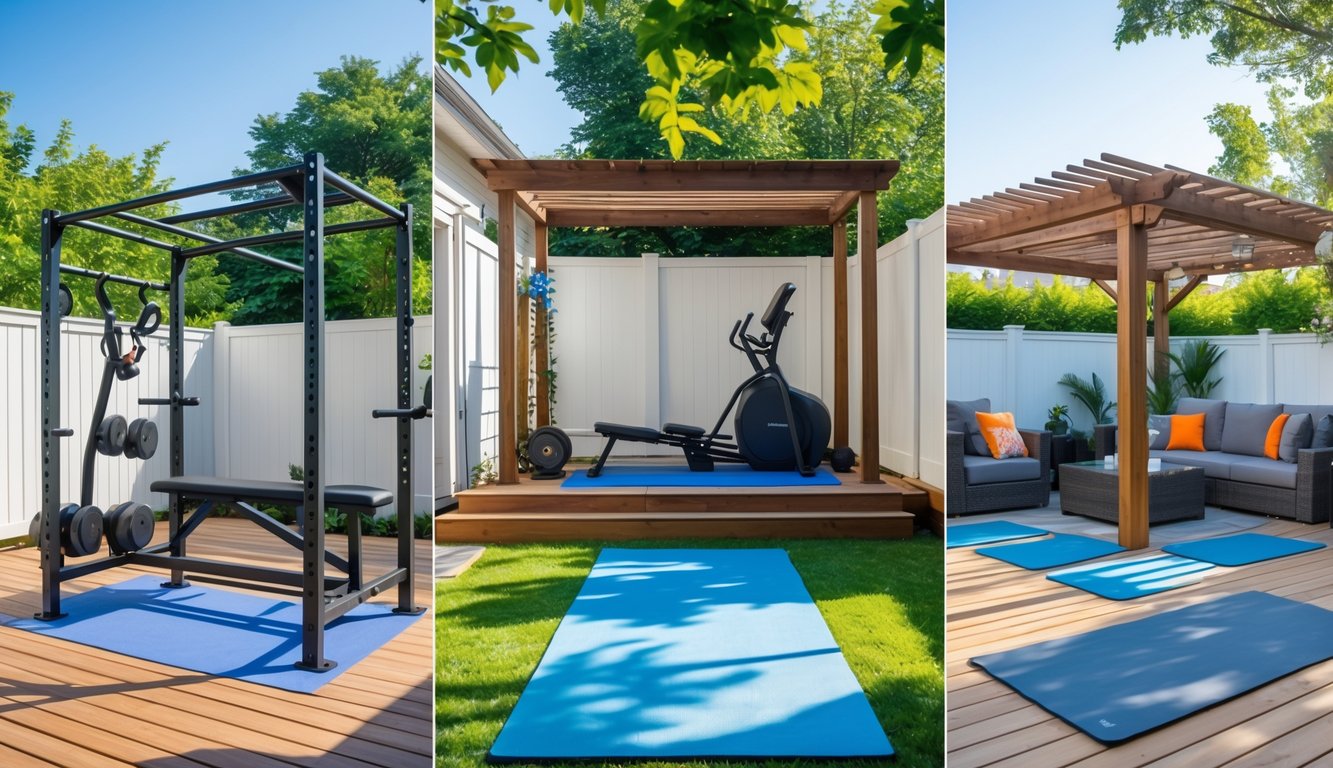
Creating an outdoor gym requires attention to durable materials and careful layout. Choosing the right equipment helps it withstand weather, while planning the space ensures safety and ease of movement during workouts.
Weatherproof Materials and Equipment
Outdoor gyms face sun, rain, wind, and sometimes snow. Equipment must be made of rust-resistant metals like stainless steel or aluminum. Powder-coated finishes add extra protection.
Using synthetic fabrics or mesh for seats and handles prevents mold and quick drying. Rubber flooring or tiles designed for outdoor use protect surfaces and reduce slip risks.
Covering electronic devices with waterproof casings is important. If equipment is left outside, regular cleaning and checks reduce wear caused by dirt or moisture.
Space Planning for Safety and Functionality
Proper spacing is critical to avoid injuries. Leave at least 3 feet of clearance around each machine for safe entry and exit.
Consider the flow of movement, ensuring users don’t have to squeeze between equipment. Separate areas for stretching, weightlifting, and cardio help organize workouts.
Position heavier equipment on stable, level ground to prevent tipping. Use shade or coverings to keep training areas comfortable during hot weather or rain.
Clear sightlines improve supervision if the gym is shared by multiple users or family members.
Enhancing Your Outdoor Workout Experience
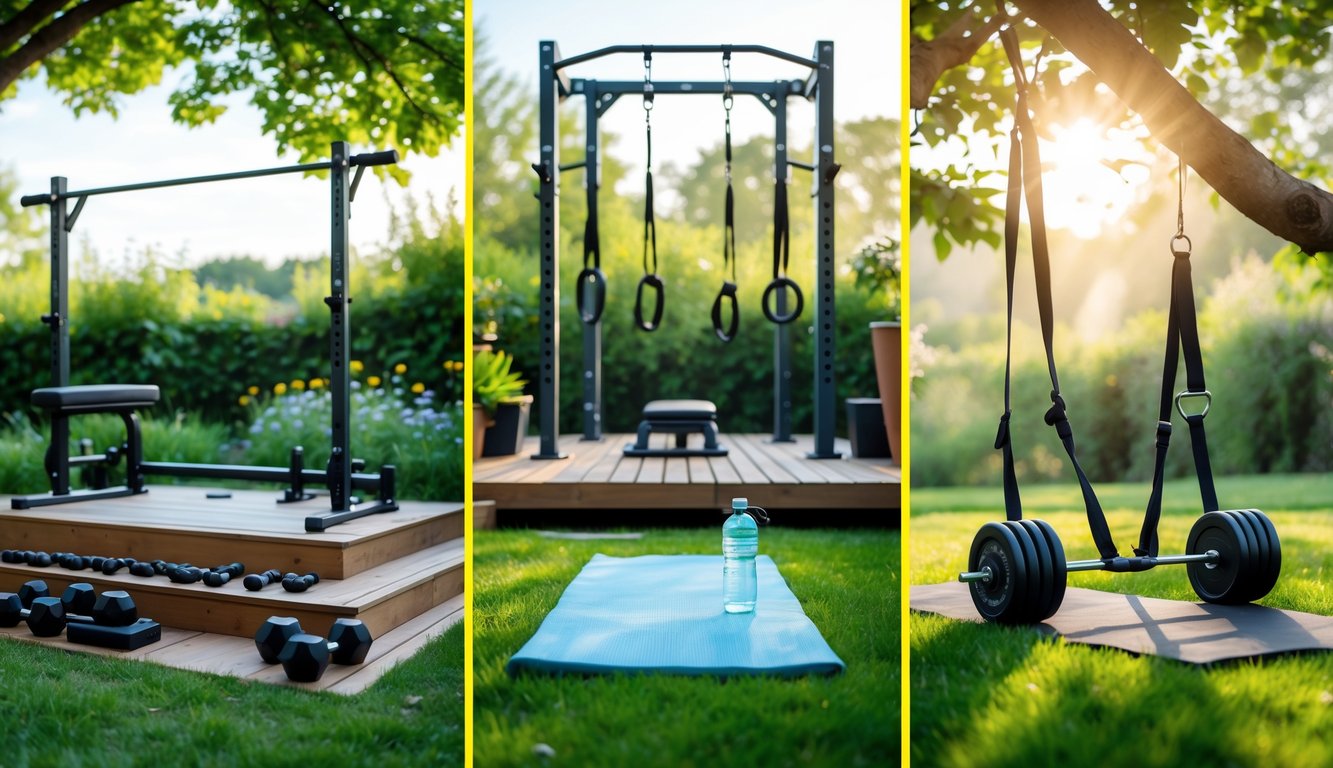
A well-designed outdoor gym goes beyond just equipment. Attention to surroundings and comfort can improve motivation and make workouts more enjoyable.
Incorporating Natural Elements
Using plants and natural materials can create a calm and inviting workout atmosphere. Adding greenery around equipment helps soften the space and keeps the air fresh. Trees or tall shrubs provide shade, reducing heat during daytime sessions.
Natural wood decks or stone floors give a stable, non-slip surface that feels grounded. They also blend well with the outdoor setting. Water features, like small fountains, add relaxing sounds that can boost focus.
Choosing the right plants is essential. Opt for low-maintenance and hardy varieties that survive your local climate. This way, the space stays attractive without extra effort.
Lighting and Privacy Solutions
Proper lighting extends workout hours into early mornings or evenings safely. Solar-powered LED lights are energy-efficient and easy to install around workout zones. These lights can be positioned to avoid glare while illuminating key areas.
Privacy is important for comfort during workouts. Screens, trellises, or fences with climbing plants create natural barriers without feeling closed-off. Adjustable shades or pergolas also offer protection from sun and provide visual privacy.
Combining lighting and privacy solutions can make the outdoor gym feel like a secluded, well-prepared fitness area ready for use any time of day.
Frequently Asked Questions
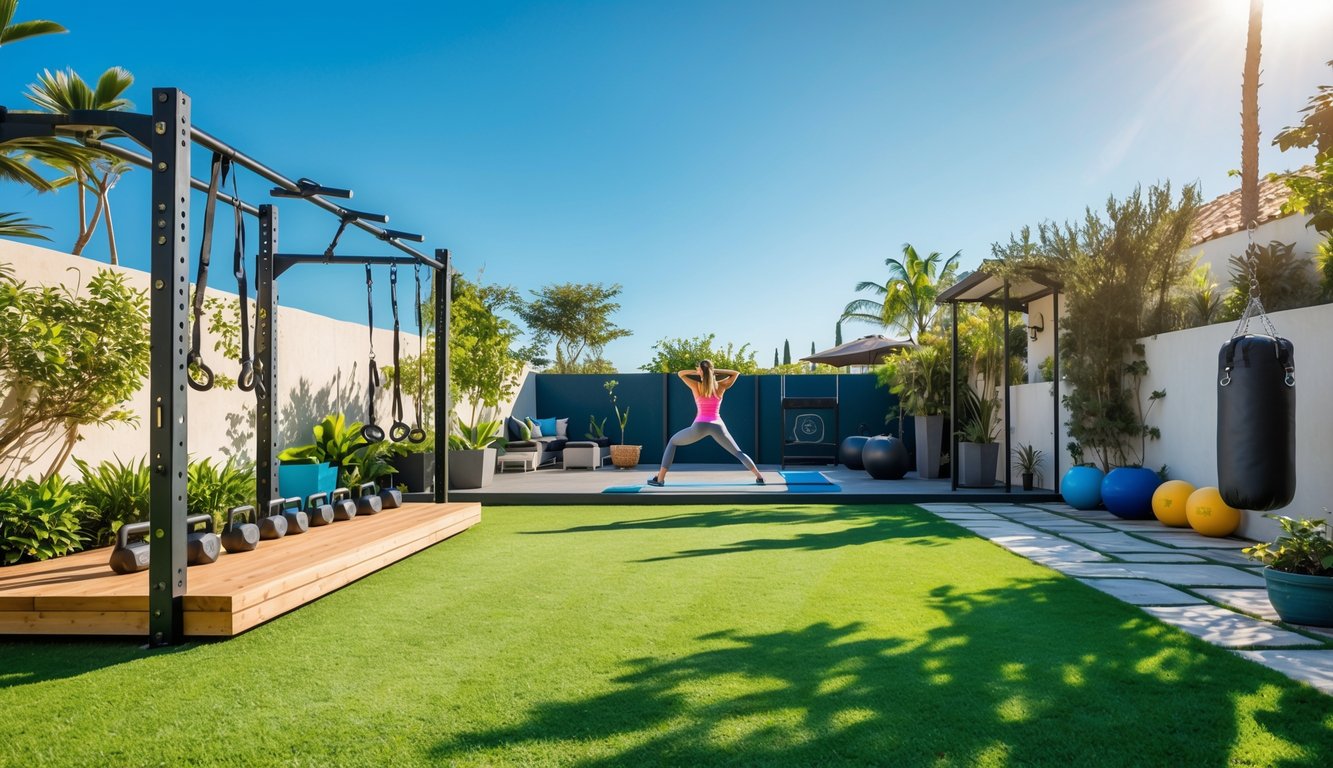
Building an effective outdoor gym requires planning for space, protection from weather, and durable materials. Using options like pergolas, modular stations, and rubber mats can improve both comfort and safety.
What are innovative ways to design a small outdoor gym at home?
Using modular gym stations helps maximize limited space. Combining pull-up bars, dip stations, and adjustable weights allows for a full-body workout in a compact area.
Adding solar-powered lighting extends workout time into the evening. This also adds a modern and energy-efficient touch to the gym space.
How can I weatherproof my outdoor gym equipment?
Selecting equipment made from rust-resistant metals and weatherproof materials is key. They withstand rain, humidity, and sun exposure without degrading quickly.
Using weather-resistant storage solutions protects smaller gear from damage. Lockable sheds or covered boxes keep equipment dry and clean.
What are the best options for covering an outdoor gym area?
Pergolas provide shade and moderate protection from rain, making workouts more comfortable. They can be enhanced with retractable canopies for added shelter.
Another option is installing waterproof tarps or awnings. These are cost-effective and easy to set up, keeping gym areas dry and extending usability.
